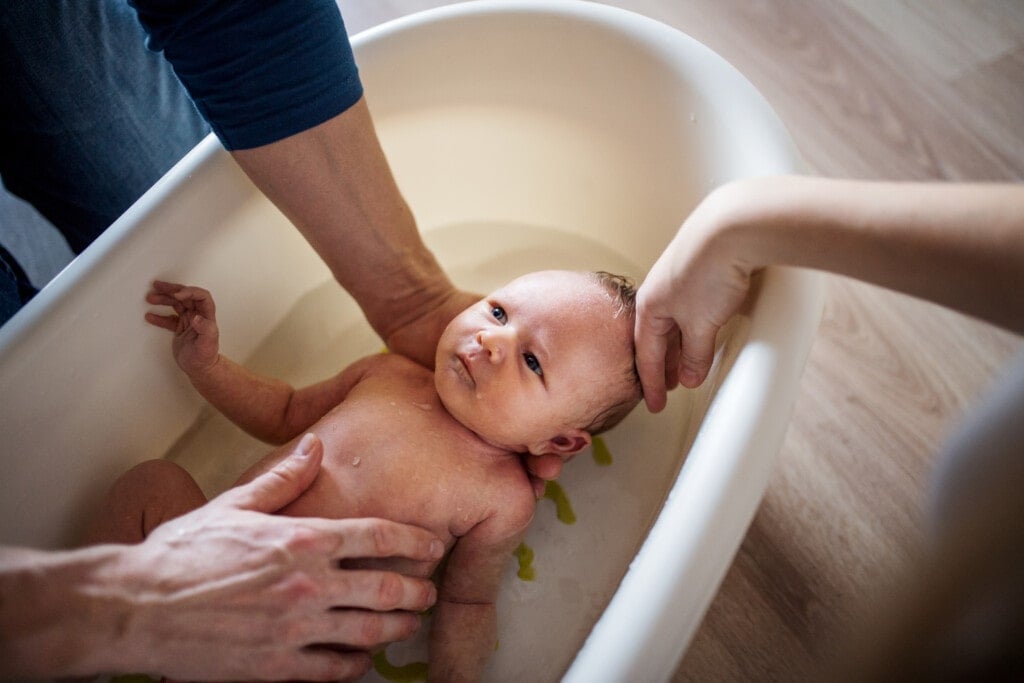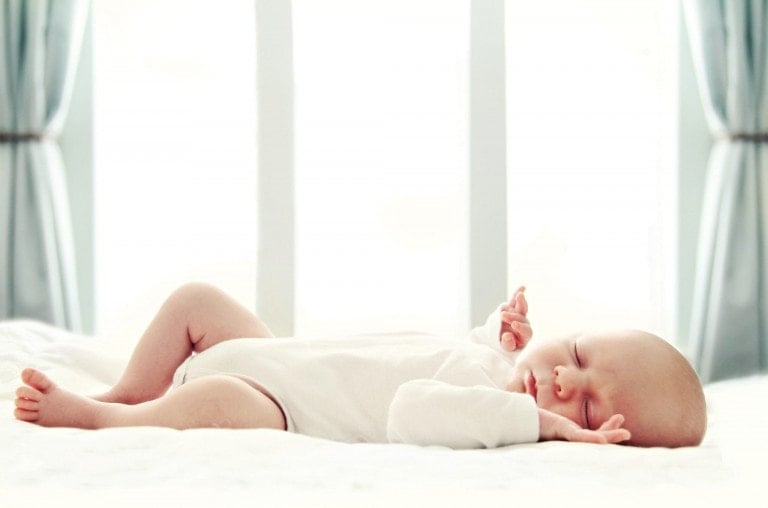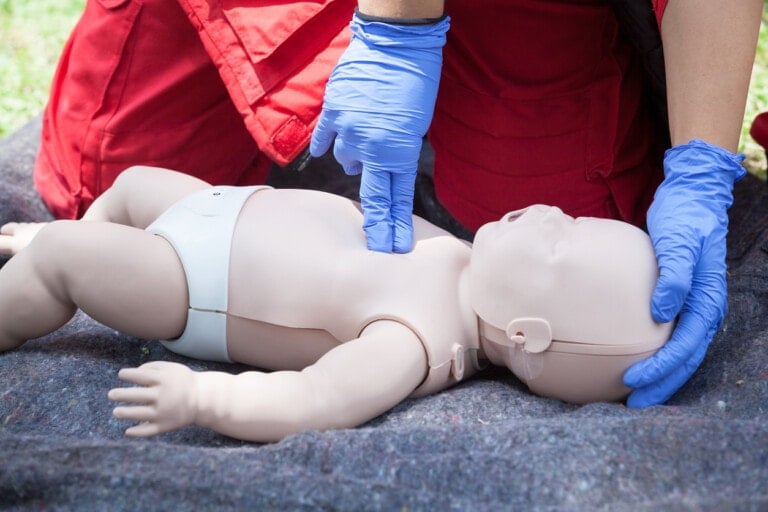When you bring your baby home for the first time, there may be many things that you worry about having ready. Of course, there are products that you will get, such as the baby bathtub and care items. But when it comes to bathing your baby, you may wonder about the best way to go about it. This is new territory for you, so knowing some bath safety tips beforehand will go a long way when your baby is here.
The bath safety tips below are great to remember in terms of the procedure of bathing a baby. Keep in mind that your baby will probably cry, and this doesn’t necessarily mean you’re doing anything wrong, but a bath is a new experience for your baby too. Here are some tips to help calm the entire experience.
Bath Safety Tips for Baby
1. Don’t put her in a tub too early.
You cannot submerge the umbilical cord stump in water until a few weeks after birth. The cord needs to have fallen off, and the area needs to be healed before you can put your baby in a tub. Before this, you can give your baby a sponge bath to help clean her. You don’t want to irritate where the cord was attached.1
2. Have all your essentials out ahead of time.
Before getting your baby ready for bath time, get out everything you need and have it within arm’s reach. You will not be able to get something if you forget it because you cannot leave your baby in the tub alone. Make sure to have a washcloth, towel, and soap/shampoo. When your child gets a bit older, you’ll add bath toys to this list, but you only need those three things now.
3. Don’t wash your baby more than three times per week.
Even though we like to shower/bathe daily (or whenever we get the chance as new moms), babies only need two or three baths per week. Any more than that, and you risk drying out her skin by stripping the natural oils too often. The point of a bath is to help clean off the gunk. Not make her skin more uncomfortable. Plus, you’re cleaning up the diaper area often with wipes, so your baby is getting cleaned multiple times a day in that area anyway.
4. Water should be about 90 degrees Fahrenheit.
Ensure the water is lukewarm to the touch instead of hot, which should be about 90 degrees Fahrenheit.2 You don’t want to risk scalding your baby or hurting her with too-warm water. It is a good idea to set your home’s water heater to 120 degrees to ensure that you don’t accidentally get any water hotter than that in the tub.3
A rubber duck that can measure temperature is helpful to have to verify that you’re at the right temperature. Other ducks give you an accurate reading as well. One word of caution, though, I had one of the simple ones, and we took it outside to play with on a sweltering day, and now it always reads “hot” on the bottom and won’t change back, so you can break them.
5. Only have about three inches of water.
It will be hard enough to keep your baby steady sometimes in the bathtub. Be sure you’re only putting in three inches of water when she’s in the bath. You don’t need more than that to get her clean, and this amount will keep her lower half warm.2
6. Do not use Q-tips or soap on her face.
Cotton swabs can cause injury to your baby’s little nose and ears, so don’t use them. Soap can irritate your baby’s eyes and get into her mouth, so be sure to use clear water to wipe down her face.2
7. Always keep a hand on your baby.
Things can change so quickly, and babies are super slippery. It’s essential always to keep a hand on your baby when you’re bathing her. This will help avoid injury and keep her steady as you wash her.
8. Use a baby bathtub or get in with them.
Baby bathtubs are the best choice because they will help keep your baby in place, and you will be able to handle your baby much easier. When my kids outgrew these tubs, I would get into the full-sized tub with them for a while to ensure they didn’t tip over.
Bath time can be fun for you and your baby, but keeping the time safe is essential. With some planning, the right tools, a gentle hand, and these bath safety tips, you can make bath time enjoyable for everyone.































